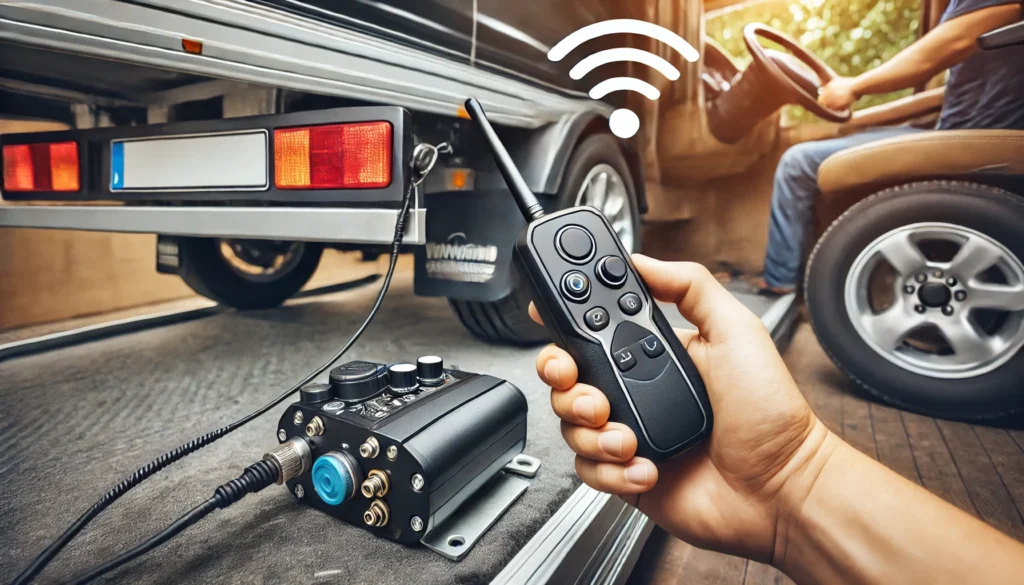Wireless electric trailer brakes are revolutionizing the way trailers are towed by eliminating the need for traditional wired brake controllers. These systems offer greater convenience, flexibility, and ease of use, especially for drivers who tow multiple trailers or frequently switch between vehicles. In this guide, we’ll explore the benefits of wireless electric trailer brakes, how they work, and why they’re becoming a popular choice for modern towing setups.
What Are Wireless Electric Trailer Brakes?
Wireless electric trailer brakes are a braking system that uses wireless technology to communicate between the brake controller and the trailer’s brakes. Instead of running physical wires from the tow vehicle to the trailer, a wireless signal transmits the braking commands, making installation and towing easier. This system allows for a cleaner, quicker setup and often improves the towing experience by reducing the complexity of traditional wiring.
How Do Wireless Electric Trailer Brakes Work?
Wireless electric trailer brakes work by using a wireless brake controller installed in the tow vehicle. This controller sends signals to a receiver installed on the trailer, which then activates the electric brakes when needed. The wireless brake controller typically communicates via Bluetooth or other wireless technologies, ensuring smooth and precise braking control without the need for physical wiring connections.

Basic Components of Wireless Electric Trailer Brakes:
- Wireless Brake Controller: Installed inside the tow vehicle, the controller transmits wireless signals to the trailer’s braking system when the vehicle’s brakes are applied.
- Receiver on the Trailer: The receiver mounted on the trailer picks up the signal from the wireless controller and activates the trailer’s brakes.
- Electric Brakes: As with traditional electric trailer brakes, the brakes on each wheel are powered by the signal received from the controller.
Benefits of Wireless Electric Trailer Brakes
Wireless electric trailer brakes offer several key advantages over traditional wired systems, making them an appealing option for modern trailers.
1. Easy Installation
One of the biggest benefits of wireless electric trailer brakes is the ease of installation. There’s no need to run lengthy wiring harnesses from the vehicle to the trailer, which can save time and effort. The wireless system is much more straightforward, requiring only the installation of the brake controller in the vehicle and the receiver on the trailer.
2. Convenience
For those who tow different trailers or switch vehicles often, wireless systems are far more convenient. Since there are no wires to disconnect or reconnect, drivers can easily switch between setups without the hassle of rewiring the trailer every time.
3. Flexibility
Wireless brake systems offer greater flexibility in terms of trailer compatibility. The same controller can be used with multiple trailers as long as each trailer is equipped with a receiver. This makes wireless systems ideal for those who tow a variety of trailers or for rental vehicles.
4. Clean and Clutter-Free
Eliminating wires between the tow vehicle and trailer results in a cleaner setup, reducing the risk of tangled or damaged wires. Wireless systems also contribute to a more aesthetically pleasing and organized towing configuration.
How to Install Wireless Electric Trailer Brakes
Installing wireless electric trailer brakes is simpler than installing traditional systems, but it still requires attention to detail. Here’s a basic step-by-step guide:
1. Install the Wireless Brake Controller
Install the wireless brake controller inside the tow vehicle. Most wireless controllers are designed to plug into the vehicle’s power outlet or cigarette lighter. The controller should be positioned in a location where the driver can easily access it while towing.
2. Install the Receiver on the Trailer
The next step is to install the wireless receiver on the trailer. This is typically mounted near the trailer’s brake assembly and connected to the trailer’s existing electric brake wiring. The receiver acts as the communication hub between the tow vehicle and the trailer’s brakes.
3. Pair the Controller and Receiver
Once the hardware is installed, the brake controller and receiver need to be paired. This usually involves following the manufacturer’s instructions to establish a wireless connection between the two devices. Some systems may use Bluetooth or Wi-Fi for pairing.
4. Test the System
After pairing, test the wireless electric brake system to ensure it’s working properly. Drive at a low speed and apply the brakes to check that the trailer’s electric brakes engage smoothly and consistently.
Maintenance Tips for Wireless Electric Trailer Brakes
While wireless electric trailer brakes require less maintenance than traditional systems, they still benefit from regular checks to ensure optimal performance. Here are some maintenance tips to keep in mind:
- Regularly Inspect the Receiver: Ensure the receiver is securely mounted and free of dirt, moisture, or damage. Since it is an electronic component, keeping it in good condition is essential for consistent performance.
- Test the Wireless Connection: Periodically test the connection between the brake controller and receiver to ensure they are paired and communicating correctly. A weak or dropped signal can affect braking performance.
- Check the Electric Brakes: As with any electric brake system, regularly inspect the brake components, including magnets, shoes, and drums, to ensure they are in good condition.
Conclusion
Wireless electric trailer brakes provide a modern, convenient solution for towing that simplifies the process and reduces the complexity of wiring. With easy installation, increased flexibility, and reliable performance, wireless systems are becoming the go-to choice for many trailer owners. Whether you’re upgrading an older system or outfitting a new trailer, wireless electric brakes can offer a clean, hassle-free solution that improves the overall towing experience.
